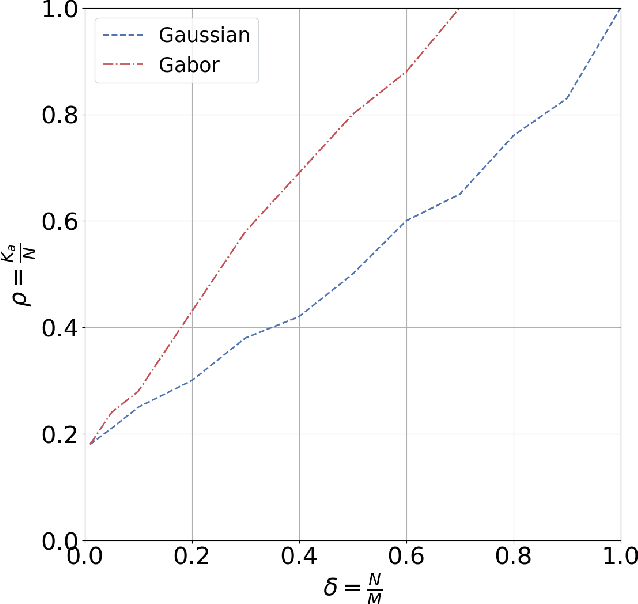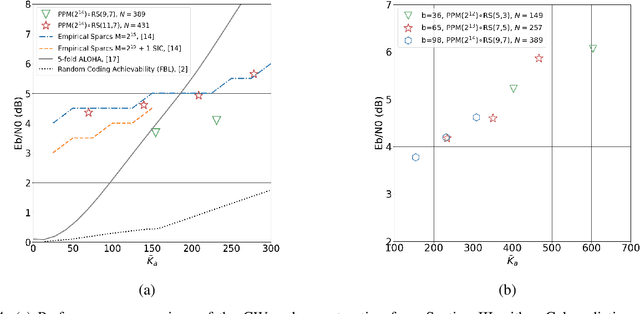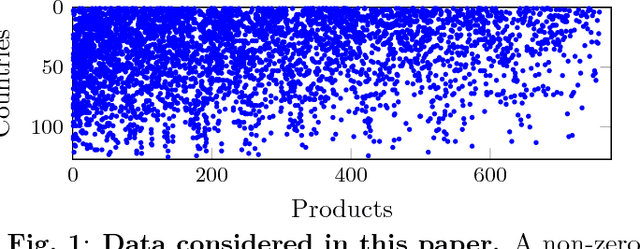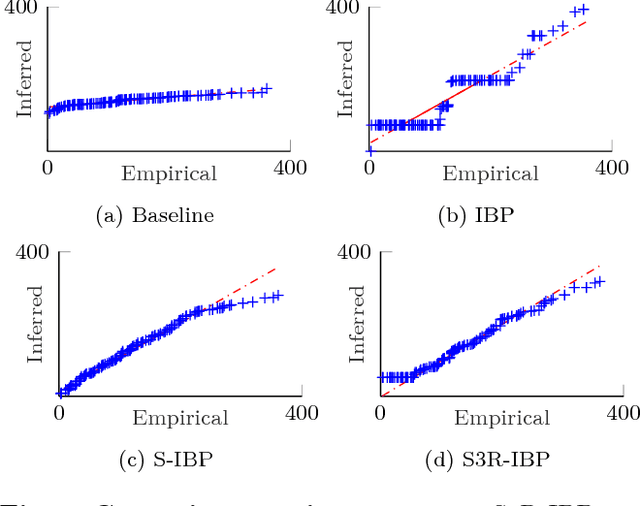Zoran Utkovski
An Age of Information Characterization of SPS for V2X Applications
Dec 19, 2024Abstract:We derive a closed-form approximation of the stationary distribution of the Age of Information (AoI) of the semi-persistent scheduling (SPS) protocol which is a core part of NR-V2X, an important standard for vehicular communications. While prior works have studied the average AoI under similar assumptions, in this work we provide a full statistical characterization of the AoI by deriving an approximation of its probability mass function. As result, besides the average AoI, we are able to evaluate the age-violation probability, which is of particular relevance for safety-critical applications in vehicular domains, where the priority is to ensure that the AoI does not exceed a predefined threshold during system operation. The study reveals complementary behavior of the age-violation probability compared to the average AoI and highlights the role of the duration of the reservation as a key parameter in the SPS protocol. We use this to demonstrate how this crucial parameter should be tuned according to the performance requirements of the application.
Optimized Detection with Analog Beamforming for Monostatic Integrated Sensing and Communication
Apr 15, 2024Abstract:In this paper, we formalize an optimization framework for analog beamforming in the context of monostatic integrated sensing and communication (ISAC), where we also address the problem of self-interference in the analog domain. As a result, we derive semidefinite programs to approach detection-optimal transmit and receive beamformers, and we devise a superiorized iterative projection algorithm to approximate them. Our simulations show that this approach outperforms the detection performance of well-known design techniques for ISAC beamforming, while it achieves satisfactory self-interference suppression.
Neuromorphic Wireless Device-Edge Co-Inference via the Directed Information Bottleneck
Apr 02, 2024Abstract:An important use case of next-generation wireless systems is device-edge co-inference, where a semantic task is partitioned between a device and an edge server. The device carries out data collection and partial processing of the data, while the remote server completes the given task based on information received from the device. It is often required that processing and communication be run as efficiently as possible at the device, while more computing resources are available at the edge. To address such scenarios, we introduce a new system solution, termed neuromorphic wireless device-edge co-inference. According to it, the device runs sensing, processing, and communication units using neuromorphic hardware, while the server employs conventional radio and computing technologies. The proposed system is designed using a transmitter-centric information-theoretic criterion that targets a reduction of the communication overhead, while retaining the most relevant information for the end-to-end semantic task of interest. Numerical results on standard data sets validate the proposed architecture, and a preliminary testbed realization is reported.
BiSPARCs for Unsourced Random Access in Massive MIMO
Apr 27, 2023Abstract:This paper considers the massive MIMO unsourced random access problem in a quasi-static Rayleigh fading setting. The proposed coding scheme is based on a concatenation of a "conventional" channel code (such as, e.g., LDPC) serving as an outer code, and a sparse regression code (SPARC) serving as an inner code. The scheme combines channel estimation, single-user decoding, and successive interference cancellation in a novel way. The receiver performs joint channel estimation and SPARC decoding via an instance of a bilinear generalized approximate message passing (BiGAMP) based algorithm, which leverages the intrinsic bilinear structure that arises in the considered communication regime. The detection step is followed by a per-user soft-input-soft-output (SISO) decoding of the outer channel code in combination with a successive interference cancellation (SIC) step. We show via numerical simulation that the resulting scheme achieves stat-of-the-art performance in the massive connectivity setting, while attaining comparatively low implementation complexity.
Constant Weight Codes with Gabor Dictionaries and Bayesian Decoding for Massive Random Access
Jul 26, 2022



Abstract:This paper considers a general framework for massive random access based on sparse superposition coding. We provide guidelines for the code design and propose the use of constant-weight codes in combination with a dictionary design based on Gabor frames. The decoder applies an extension of approximate message passing (AMP) by iteratively exchanging soft information between an AMP module that accounts for the dictionary structure, and a second inference module that utilizes the structure of the involved constant-weight code. We apply the encoding structure to (i) the unsourced random access setting, where all users employ a common dictionary, and (ii) to the "sourced" random access setting with user-specific dictionaries. When applied to a fading scenario, the communication scheme essentially operates non-coherently, as channel state information is required neither at the transmitter nor at the receiver. We observe that in regimes of practical interest, the proposed scheme compares favorably with state-of-the art schemes, in terms of the (per-user) energy-per-bit requirement, as well as the number of active users that can be simultaneously accommodated in the system. Importantly, this is achieved with a considerably smaller size of the transmitted codewords, potentially yielding lower latency and bandwidth occupancy, as well as lower implementation complexity.
Transfer Learning in Multi-Agent Reinforcement Learning with Double Q-Networks for Distributed Resource Sharing in V2X Communication
Jul 13, 2021



Abstract:This paper addresses the problem of decentralized spectrum sharing in vehicle-to-everything (V2X) communication networks. The aim is to provide resource-efficient coexistence of vehicle-to-infrastructure(V2I) and vehicle-to-vehicle(V2V) links. A recent work on the topic proposes a multi-agent reinforcement learning (MARL) approach based on deep Q-learning, which leverages a fingerprint-based deep Q-network (DQN) architecture. This work considers an extension of this framework by combining Double Q-learning (via Double DQN) and transfer learning. The motivation behind is that Double Q-learning can alleviate the problem of overestimation of the action values present in conventional Q-learning, while transfer learning can leverage knowledge acquired by an expert model to accelerate learning in the MARL setting. The proposed algorithm is evaluated in a realistic V2X setting, with synthetic data generated based on a geometry-based propagation model that incorporates location-specific geographical descriptors of the simulated environment(outlines of buildings, foliage, and vehicles). The advantages of the proposed approach are demonstrated via numerical simulations.
Set-Theoretic Learning for Detection in Cell-Less C-RAN Systems
Mar 21, 2021
Abstract:Cloud-radio access network (C-RAN) can enable cell-less operation by connecting distributed remote radio heads (RRHs) via fronthaul links to a powerful central unit. In conventional C-RAN, baseband signals are forwarded after quantization/ compression to the central unit for centralized processing to keep the complexity of the RRHs low. However, the limited capacity of the fronthaul is thought to be a significant bottleneck in the ability of C-RAN to support large systems (e.g. massive machine-type communications (mMTC)). Therefore, in contrast to the conventional C-RAN, we propose a learning-based system in which the detection is performed locally at each RRH and only the likelihood information is conveyed to the CU. To this end, we develop a general set-theoretic learningmethod to estimate likelihood functions. The method can be used to extend existing detection methods to the C-RAN setting.
Joint Source-Channel Coding for Semantics-Aware Grant-Free Radio Access in IoT Fog Networks
Jan 27, 2021



Abstract:A fog-radio access network (F-RAN) architecture is studied for an Internet-of-Things (IoT) system in which wireless sensors monitor a number of multi-valued events and transmit in the uplink using grant-free random access to multiple edge nodes (ENs). Each EN is connected to a central processor (CP) via a finite-capacity fronthaul link. In contrast to conventional information-agnostic protocols based on separate source-channel (SSC) coding, where each device uses a separate codebook, this paper considers an information-centric approach based on joint source-channel (JSC) coding via a non-orthogonal generalization of type-based multiple access (TBMA). By leveraging the semantics of the observed signals, all sensors measuring the same event share the same codebook (with non-orthogonal codewords), and all such sensors making the same local estimate of the event transmit the same codeword. The F-RAN architecture directly detects the events values without first performing individual decoding for each device. Cloud and edge detection schemes based on Bayesian message passing are designed and trade-offs between cloud and edge processing are assessed.
Sparse Three-parameter Restricted Indian Buffet Process for Understanding International Trade
Jun 29, 2018



Abstract:This paper presents a Bayesian nonparametric latent feature model specially suitable for exploratory analysis of high-dimensional count data. We perform a non-negative doubly sparse matrix factorization that has two main advantages: not only we are able to better approximate the row input distributions, but the inferred topics are also easier to interpret. By combining the three-parameter and restricted Indian buffet processes into a single prior, we increase the model flexibility, allowing for a full spectrum of sparse solutions in the latent space. We demonstrate the usefulness of our approach in the analysis of countries' economic structure. Compared to other approaches, empirical results show our model's ability to give easy-to-interpret information and better capture the underlying sparsity structure of data.
 Add to Chrome
Add to Chrome Add to Firefox
Add to Firefox Add to Edge
Add to Edge